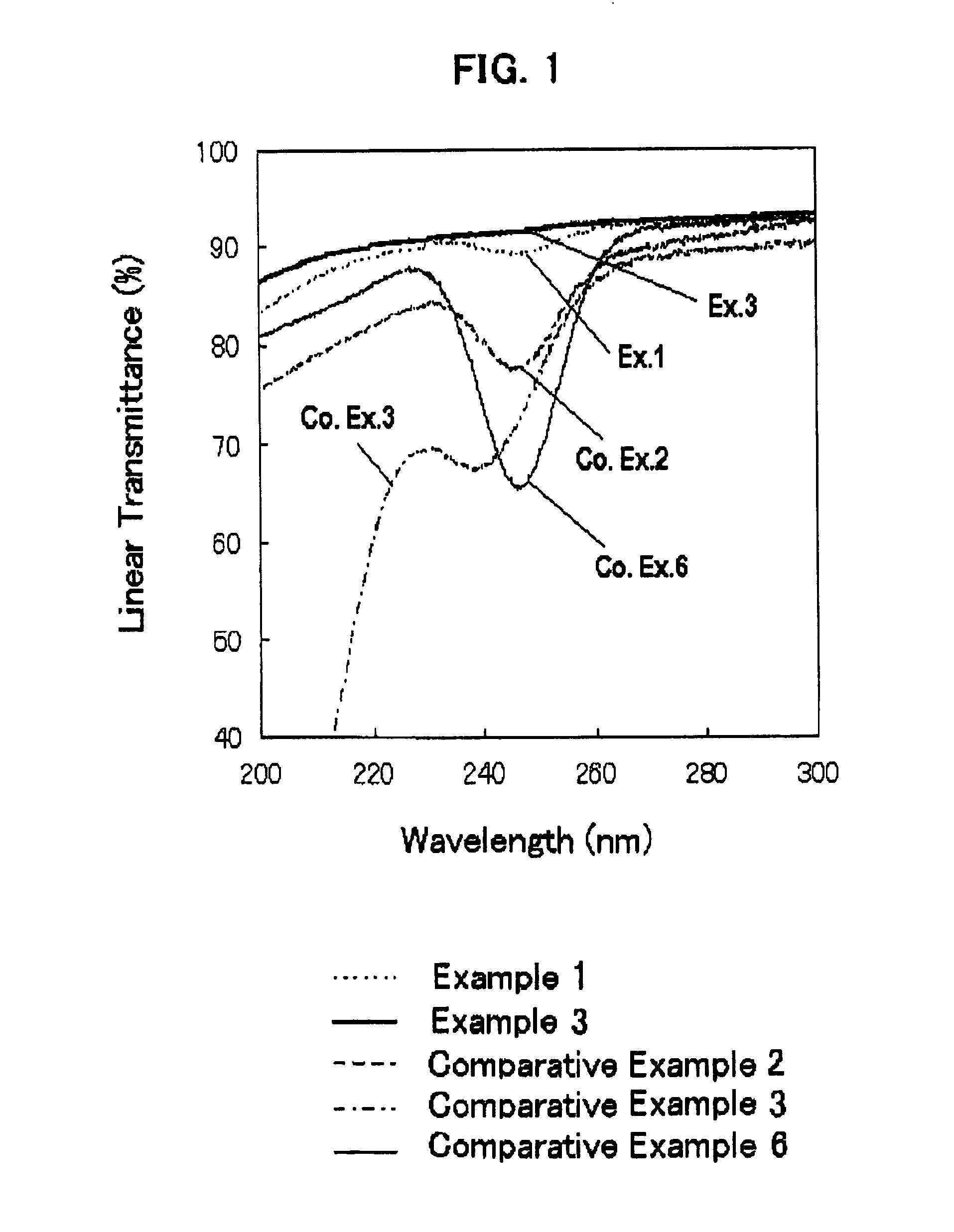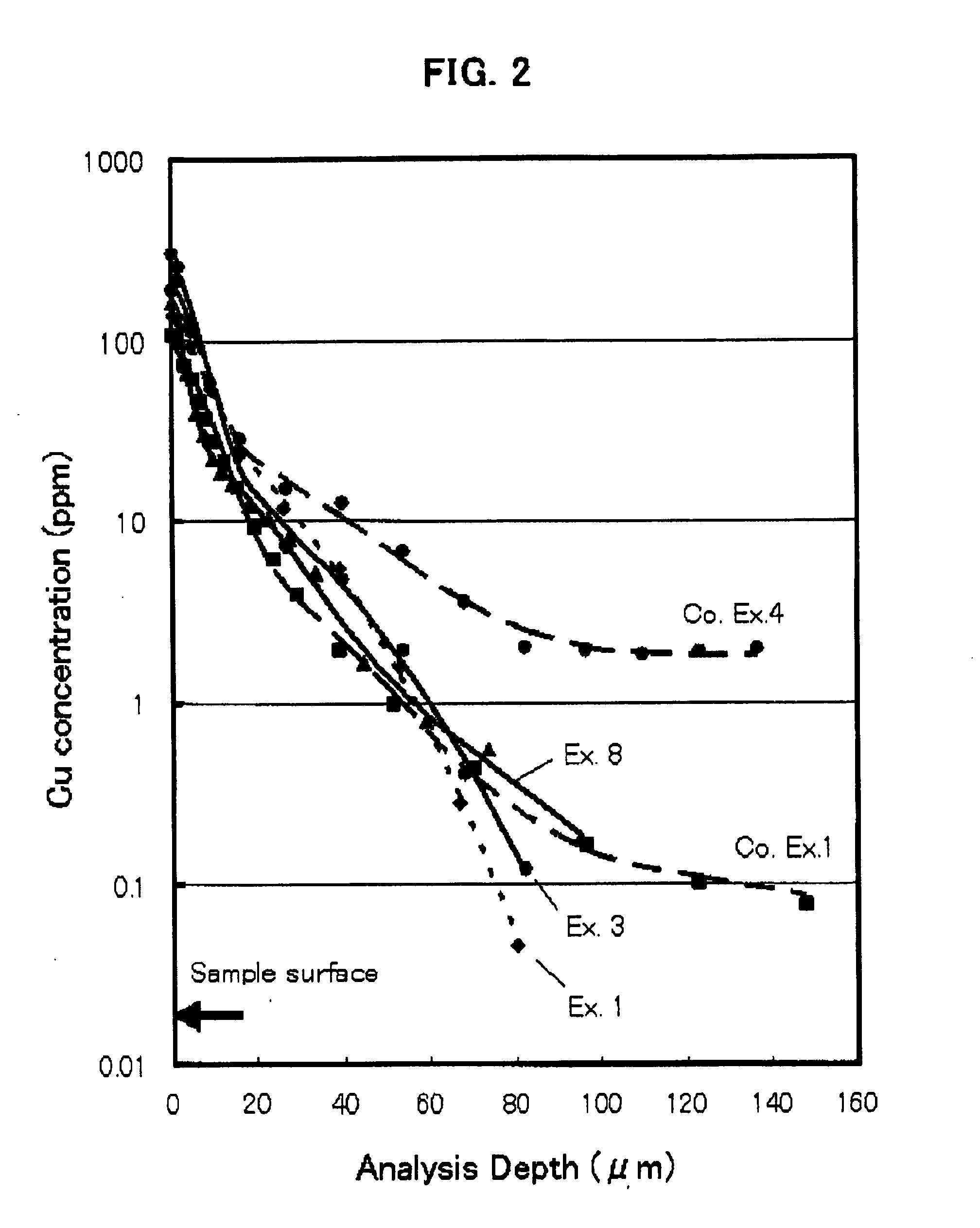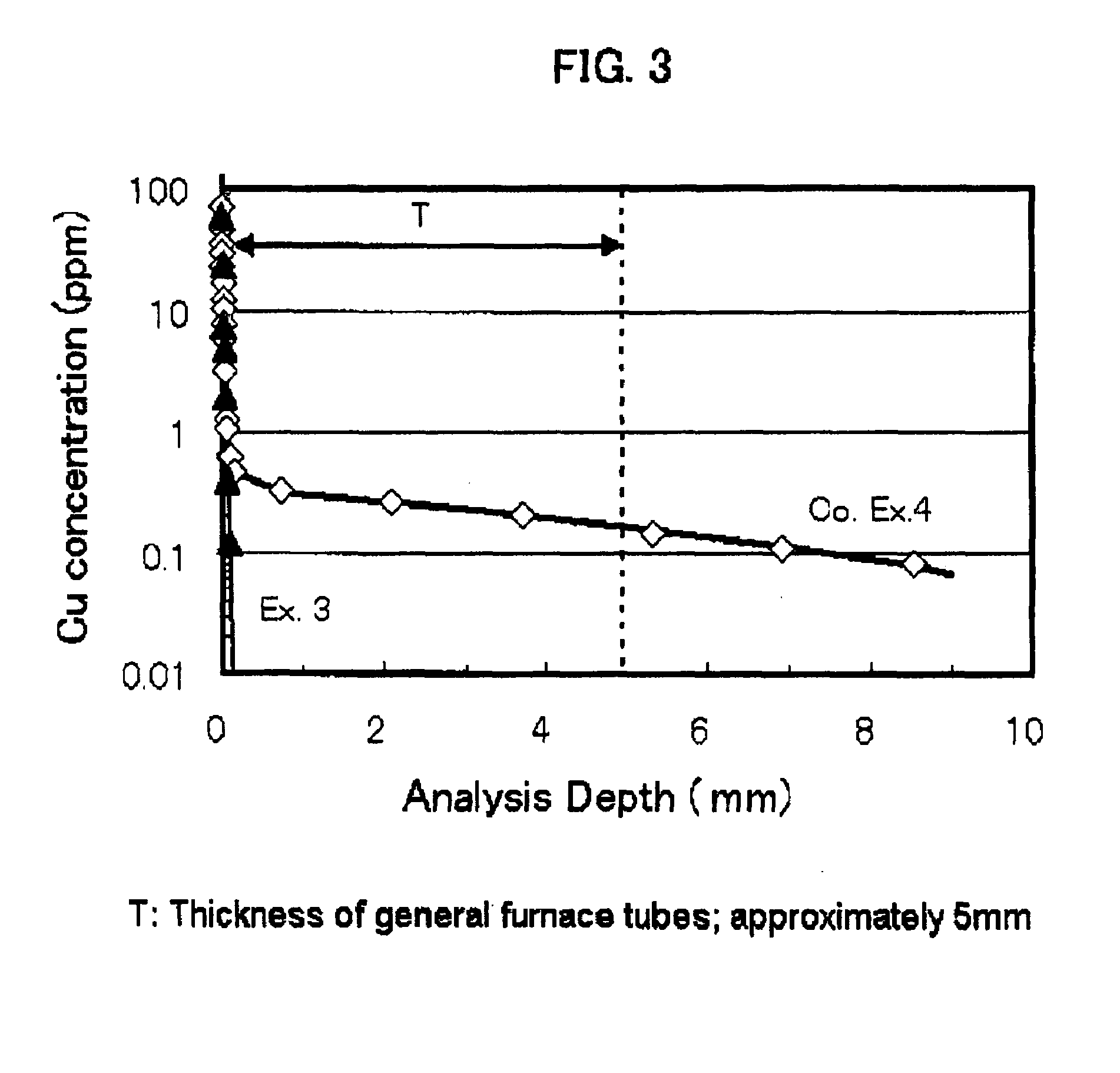Fused silica glass and process for producing the same
a technology of fused silica glass and silica material, which is applied in glass tempering apparatus, glass making apparatus, manufacturing tools, etc., can solve the problems of contaminated silicon wafers in furnace tubes, undetectable avoidance elements in conventional fused silica glass made from natural silica materials, and contaminated simiconductor, etc., to achieve high purity, good high-temperature viscosity, and high transparency
- Summary
- Abstract
- Description
- Claims
- Application Information
AI Technical Summary
Benefits of technology
Problems solved by technology
Method used
Image
Examples
example 1
[0083]A high-purity amorphous synthetic silica powder having a particle diameter of approximately 200 μm, a OH group content of 40 ppm, and a metal impurity content such that each of Li, Na, K, Mg, Ca and Cu was not larger than 0.01 ppm, was mixed with 0.1% by weight of a crystobalite powder. The mixed powder was sintered at 1500° C. for 60 hours to give a crystobalite powder having a crystallization degree of approximately 100%.
[0084]The thus-obtained crystobalite powder was fused by a plasma arc at an input power of 590 A / 160 V and a raw material feed rate of 4.5 kg / hr in an argon atmosphere to give a glass ingot. The glass ingot was subjected to a HIP treatment, and then an annealing treatment to remove stress.
[0085]The thus-obtained fused silica glass had a metal impurity content and a OH group content, as shown in Table 1, below. The fused silica glass had an internal transmittance of ultraviolet ray with a wavelength of 245 nm, and a viscosity coefficient at 1215° C., as shown...
example 2
[0087]Substantially the same procedures as adopted in Example 1, fused silica glass was made wherein an electric fusion method was adopted instead of the plasma arc fusion method for fusing the sintered crystbalitized powder, and the fusion was conducted at 1800° C. for 1 hour in N2 atmosphere. All other conditions and procedures remained the same.
[0088]The impurity contents, internal transmittance and viscosity coefficient of the fused silica glass are shown in Tables 1 and 2. Thus the fused silica glass of Example 2 did not exhibit a specific absorption in the region spanning from ultraviolet ray to infrared ray, and had a high purity and a high viscosity.
example 3
[0089]Substantially the same procedures as adopted in Example 1, fused silica glass was made, wherein the same high-purity amorphous synthetic silica powder as used in Example 1 was mixed with an alumina powder in an amount of 1 ppm as Al metal, and the mixed powder was sintered under the same conditions as in Example 1 to give a crystobalite powder with a crystallization degree of approximately 100%, and the fused silica glass was made therefrom. All other conditions and procedures remained the same.
[0090]The impurity contents, internal transmittance and viscosity coefficient of the fused silica glass are shown in Tables 1 and 2. Thus the fused silica glass of Example 3 did not exhibit a specific absorption in the region spanning from ultraviolet ray to infrared ray, and had a high purity and a high viscosity.
[0091]The distribution of the copper ion concentration as measured when the heat-treatment was conducted at 1050° C. for 24 hours in the air using CuO as diffusion source is s...
PUM
| Property | Measurement | Unit |
|---|---|---|
| thickness | aaaaa | aaaaa |
| thickness | aaaaa | aaaaa |
| transmittance | aaaaa | aaaaa |
Abstract
Description
Claims
Application Information
 Login to View More
Login to View More - R&D
- Intellectual Property
- Life Sciences
- Materials
- Tech Scout
- Unparalleled Data Quality
- Higher Quality Content
- 60% Fewer Hallucinations
Browse by: Latest US Patents, China's latest patents, Technical Efficacy Thesaurus, Application Domain, Technology Topic, Popular Technical Reports.
© 2025 PatSnap. All rights reserved.Legal|Privacy policy|Modern Slavery Act Transparency Statement|Sitemap|About US| Contact US: help@patsnap.com



